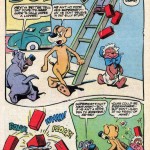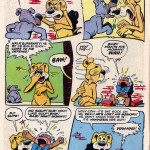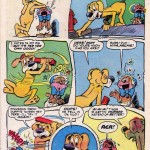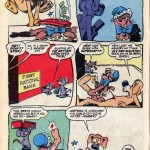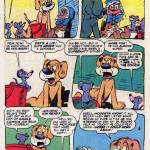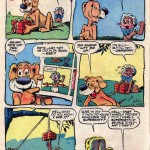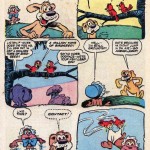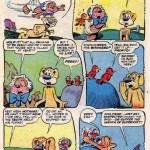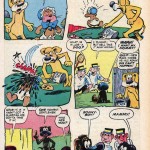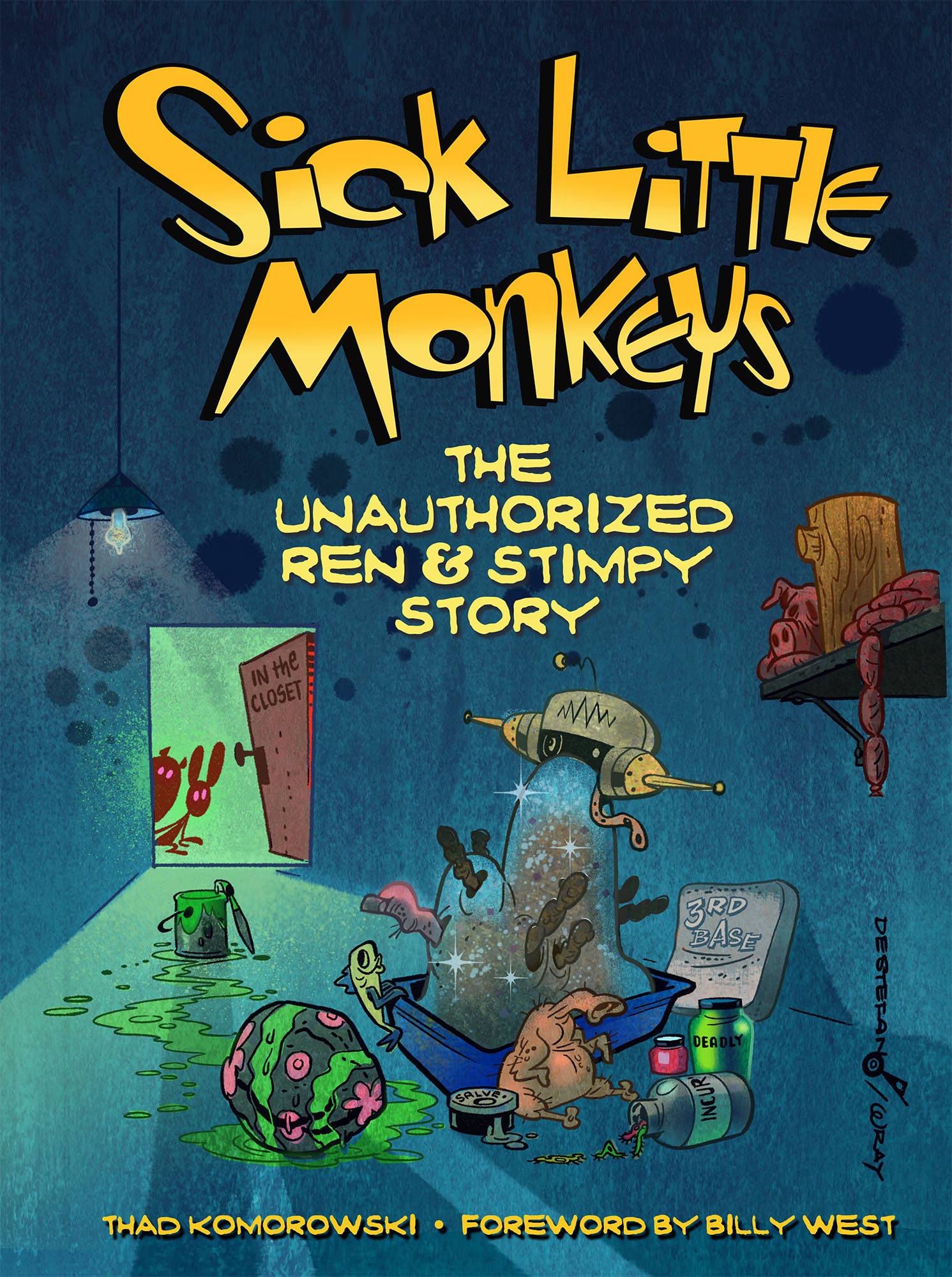Just to break up the monotony of Looney Tunes, here’s a pseudo-Looney Tune…
These Blackie vs. Wolfie shorts are some of the rarer gems of 1940s cartoonery. The shorts are obviously inspired by Bugs Bunny, but they still manage to have their own identity – the characters are always trying to kill each other, but they’re almost suburbanites in being on first-name terms with each other. Lamb in a Jam and Sheep Shape are even better than this one, but I don’t have presentable copies of either now, unfortunately. I posted about the first, and best, of the cartoons, No Mutton fer Nuttin’, here.
The animation by Dave Tendlar’s crew (his star animator was powerhouse Marty Taras) is full of vigor, echoing some of Bob Clampett’s work in that every miniscule action has a mind of its own. The scenes with the ‘ear-drum’ and Wolfie inhaling the ‘mint julep’ are at least as good as any animation done at Warners at the time. There’s even some well-acted footage of Wolfie dying of sunstroke in the desert (this looks like it could be Morey Reden’s work, though it might not be).
What most people don’t understand about Famous Studios is that while there were several units operating with a lead animator, those leaders didn’t direct in the fashion that the Warner or MGM directors would (the ‘idealized’ director system, which almost never, ever happens in animation, anywhere). Rather, head hacks Seymour Kneitel and Izzy Sparber would have final approval over everything, and almost always water everything down to a meandering 1-2-3 pace (Tendlar and Tom Johnson still managed to get the best results possible out of this system). Animation veteran (and treasure) Howard Beckerman told me there was no shortage of talent at Famous and some of them could have become high-profile directors if it weren’t for these management politics. The Paramount suits sure didn’t get in the way – they just cared if the pictures were clean, not if they were any good.
Regardless, the best of the 1940s Famous Studios cartoons remain the most underrated and neglected of animation’s golden age (along with Shamus Culhane’s work at Lantz). There’s a lingering stigma to reject them because they require a bit more work to get into, but trust me, find the right ones, like this one, and you’ll be rewarded.
Much Ado About Mutton was the last of the Sheep-Wolf cartoons, and the Blackie character axed permanently. (Wolfie would live on to harass other small creatures and be occasionally scared shitless by Casper the Friendly Ghost.) Here is a Tendlar model sheet of the character done for this particular cartoon (courtesy of Bob Jaques).


 The robot is a great example of how even a noncharacter can be given life if it’s just moved well enough; it’s actually a menace to the mice, and the humor of the situation is improved from the dilemma in Modern, where it’s not just the cheese that’s considered waste, but Bertie too. It’s easily the best robot ever animated, and it doesn’t even have a face. (The hell with Wall-E – again.)
The robot is a great example of how even a noncharacter can be given life if it’s just moved well enough; it’s actually a menace to the mice, and the humor of the situation is improved from the dilemma in Modern, where it’s not just the cheese that’s considered waste, but Bertie too. It’s easily the best robot ever animated, and it doesn’t even have a face. (The hell with Wall-E – again.)